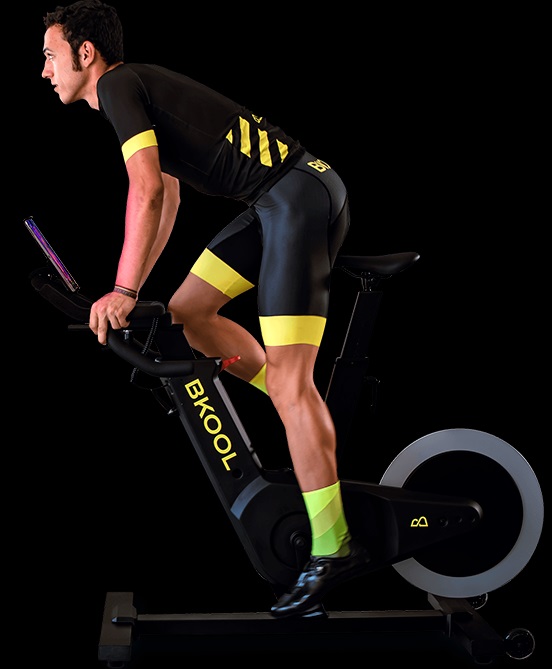
How to Train with Rollers and Racing Bike in JULY 2025: Complete Training Schedule and Plan
announcements offers promotions racing bike mtb gravel ebike JULY 2025 prices best discounts
Nutrition for Cyclists: The Correct Diet to Follow in JULY 2025
GranFondo GF ROAD Calendar JULY 2025 complete list of dates
GranFondo MTB Calendar JULY 2025 complete list of dates
How to Train with a Road Bike in JULY 2025: Complete Training Schedule and Plan
How to Train with MTB Mountain Bike in JULY 2025: Complete Training Schedule and Plan
How to Train with Rollers and Racing Bike in JULY 2025: Complete Training Schedule and Plan
Road Bike Maintenance JULY 2025 - EVERYTHING YOU NEED TO KNOW TIPS AND SECRETS
MTB Mountain Bike Maintenance JULY 2025 - EVERYTHING YOU NEED TO KNOW TIPS AND SECRETS
E-Bike Maintenance JULY 2025 - EVERYTHING YOU NEED TO KNOW TIPS AND SECRETS
How to Train with Rollers and Road Bike in JULY 2025: Complete Training Schedule and Plan
Indoor Training: How to Use Trainers and Your Road Bike in July 2025 to Stay in Peak Shape
July 2025 brings the peak of summer temperatures, often making outdoor road bike training difficult or ill-advised, especially during the hottest hours. Training rollers (or smart trainers) emerge as an indispensable tool for cyclists, allowing them to maintain and improve physical fitness in a controlled environment, optimizing every session. Indoor training precisely replicates desired stimuli, regardless of weather conditions or time constraints.
Advantages of Trainer Training in July 2025
Using trainers in July offers numerous benefits, especially in intense heat:
Environmental Control: Ability to train in air-conditioned environments, avoiding heat stroke and excessive dehydration.
Time Efficiency: Shorter but highly effective sessions, without interruptions due to traffic, traffic lights, or descents. Every minute is a useful minute of work.
Training Specificity: Easy to replicate precise power or heart rate intervals, making workouts more targeted.
Safety: Elimination of risks associated with traffic and road conditions.
Advanced Monitoring: Simplifies data collection (power, cadence, HR) for detailed performance analysis.
Training Zones and Heart Rate (HR) / Power (PWR)
Even for indoor training, we'll refer to the classic intensity zones based on Maximum Heart Rate (HRmax) or Functional Threshold Power (FTP), which are essential for structuring your training plan.
Zone 1 (Active Recovery): HR < 68% HRmax / < 55% FTP
Zone 2 (Endurance / Easy Pace): HR 69-83% HRmax / 56-75% FTP
Zone 3 (Tempo / Moderate Pace): HR 84-90% HRmax / 76-90% FTP
Zone 4 (Threshold / FTP): HR 91-95% HRmax / 91-105% FTP
Zone 5 (VO2max): HR 96-100% HRmax / 106-120% FTP
Zone 6 (Anaerobic / Sprint): > 100% HRmax / > 120% FTP
Weekly Training Schedule on Rollers (Example Microcycle for July 2025)
This schedule is an example for an amateur cyclist who intends to do most of their training on rollers in July. It can be supplemented with 1-2 outdoor rides during cooler hours, if possible.
General Goal: Maintain fitness, improve specific endurance and power, with an emphasis on training quality and heat stroke prevention.
Monday: Complete Rest or Light Active Recovery
Start the week with complete rest to promote muscle and mental recovery. Alternatively, if you feel like spinning your legs, you can opt for a light active recovery session on the trainer: 30-40 minutes in Zone 1, maintaining a very high cadence (95-105 rpm) with very little resistance. A cool environment and constant hydration are priorities.
Tuesday: Functional Threshold Power (FTP) Work
This session aims to improve your ability to sustain prolonged efforts at high intensities.
Warm-up: 15-20 minutes in Zone 2, including 2-3 minutes in Zone 3 and a few short sprints (10-15 seconds) to activate the legs.
Main Set: Perform 2-3 repetitions of 15-20 minutes each in Zone 4 (at 95-100% of your FTP). Between repetitions, take a 5-10 minute recovery in Zone 1-Zone 2.
Cool-down: 10 minutes in Zone 1. During this session, an air-conditioned environment is essential. Keep a fan pointed at you and hydrate abundantly.
Wednesday: Variable Tempo / Sweet Spot
A session aimed at building specific endurance at a comfortable but sustained intensity.
Warm-up: 15 minutes in Zone 2.
Main Set: 40-60 continuous minutes in Zone 3 (between 88-92% of FTP), with small cadence variations. You can integrate 2-3 segments of 5 minutes in low Zone 4 (91-93% FTP) to simulate changes in pace.
Cool-down: 10 minutes in Zone 1. This session is ideal for developing the ability to sustain high power for prolonged periods.
Thursday: Aerobic Power Intervals (VO2max)
High-intensity session to improve maximum aerobic power.
Warm-up: 15-20 minutes in Zone 2, with some progressions to higher intensities.
Main Set: Perform 5-7 repetitions of 3-4 minutes each in Zone 5 (at 106-115% of your FTP). Recovery between repetitions will be equal to the work time (e.g., 3 minutes of work, 3 minutes of recovery in Z1-Z2).
Cool-down: 10 minutes in Zone 1. These intervals are very demanding. Maintain high concentration, monitor your HR and power. Good ventilation is crucial to manage the heat generated.
Friday: Complete Rest or Light Active Recovery
Like Monday, this day is crucial for recovery. Opt for complete rest or, if you feel the need to move, a light active recovery session on the trainer for 30-40 minutes in Zone 1, with a high cadence.
Saturday: Strength Endurance / Specific Cadence
A session to work on strength and the ability to maintain optimal cadences.
Warm-up: 15 minutes in Zone 2.
Strength Endurance Set (hard gears): 3-4 repetitions of 8-10 minutes each in Zone 3-Zone 4, using long gears (cadence 55-65 rpm). Between repetitions, 5 minutes of recovery in Zone 1-Zone 2 with free cadence.
Specific Cadence Set (agility): 3-4 repetitions of 5 minutes each in Zone 2-Zone 3, maintaining a cadence above 100 rpm. Recovery 3 minutes in Zone 1-Zone 2.
Cool-down: 10 minutes in Zone 1. This workout can be particularly useful for simulating pedaling efficiency uphill or on flat ground against a headwind.
Sunday: Long Indoor Ride or Outdoor Ride (if possible)
Trainer Option (Controlled Long Ride): If outdoor conditions are prohibitive, you can do a long indoor ride. 1.5 - 2.5 hours in Zone 2-low Zone 3, with occasional short accelerations in high Zone 3. Use platforms like Zwift, Rouvy, or TrainerRoad to make the session more engaging. Hydration is key: plan for at least 2 large water bottles.
Outdoor Option (Specific Long Ride): If temperatures permit (starting at dawn or late afternoon), a 2.5 - 4 hour session in Zone 2-Zone 3, simulating the elevation profile of your target race. Pay maximum attention to hydration and sun protection.
Essential Integration and Recovery for July
Massive Hydration: You sweat much more on the trainer. It is crucial to constantly drink isotonic solutions with electrolytes during the workout. Having 2-3 large water bottles within reach is advisable. Also drink before and after your workout.
Adequate Ventilation: Position one or more powerful fans to simulate airflow and dissipate heat.
Absorbent Towel: Use a towel to protect your bicycle from corrosive sweat.
Targeted Nutrition: Follow a balanced diet as described in the previous article, paying particular attention to carbohydrate replenishment pre-, during, and post-workout, and protein intake for muscle recovery.
Quality Sleep: Ensure adequate nightly rest (7-9 hours) to allow your body to fully recover.
Final Considerations
Training with rollers in July 2025 is not a fallback but an excellent strategy to maintain high-quality training during a climatically challenging period. The precision of the stimuli, combined with the ability to train in optimal conditions, will make every pedal stroke productive. Always adapt this schedule to your individual needs, specific goals, and, most importantly, always listen to your body's signals.
